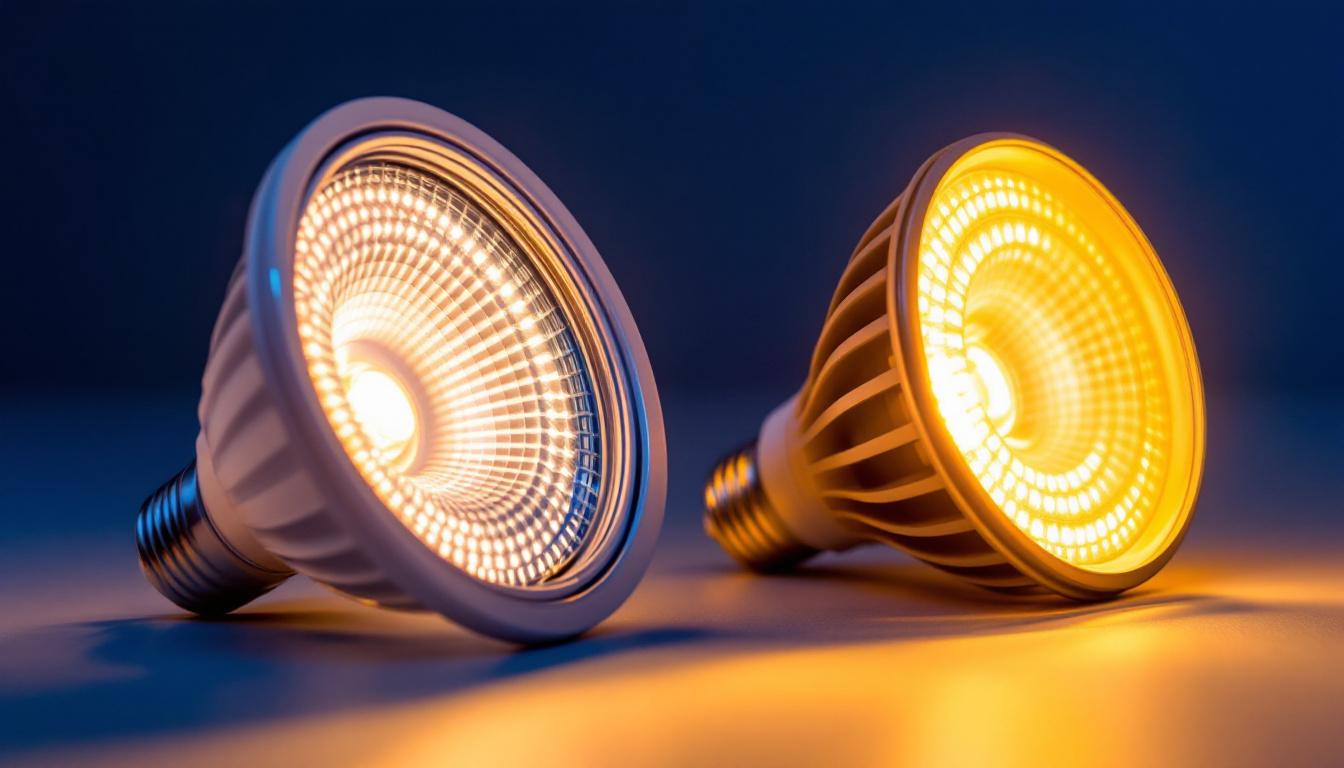
The lighting industry has undergone significant transformations over the years, driven by technological advancements, changing consumer preferences, and the increasing demand for energy efficiency. At the heart of this evolution lies the fundamental components of lighting systems: plugs and outlets. Understanding their development not only sheds light on the industry’s progress but also highlights the importance of these components in modern lighting solutions.
In the early days of electrical lighting, the focus was primarily on the light source itself. However, as electrical systems became more prevalent, the need for reliable connections emerged. The introduction of the plug and outlet system marked a pivotal moment in the evolution of lighting.
Initially, lighting systems relied on hardwired connections, which were cumbersome and limited flexibility. The advent of plugs and outlets allowed for more versatile installations, enabling easy replacement and maintenance of lighting fixtures. This innovation not only simplified the installation process but also paved the way for a wide array of lighting designs and applications. As a result, homeowners and businesses alike could experiment with different styles and functionalities, transforming spaces in ways that were previously unimaginable.
Furthermore, the emergence of portable lighting solutions, such as lamps and fixtures that could be easily moved, revolutionized how people interacted with light in their environments. This newfound flexibility encouraged creativity in interior design and architecture, as lighting became an integral part of aesthetic choices rather than just a functional necessity.
As the demand for electrical lighting grew, so did the need for standardization in plugs and outlets. Different manufacturers produced various designs, leading to compatibility issues. To address this, industry stakeholders began to collaborate on establishing standardized plug and outlet configurations. This standardization was crucial for ensuring safety and interoperability across different lighting systems.
Standardized plugs and outlets also facilitated the growth of the lighting market. Contractors could confidently install lighting solutions, knowing that they would be compatible with existing electrical systems. This reliability encouraged innovation, leading to the development of more advanced lighting technologies. For instance, the introduction of dimmable switches and smart lighting systems became possible as manufacturers could ensure that these new products would work seamlessly with established standards. As a result, consumers gained access to a broader range of lighting options that catered to their specific needs, from energy-efficient solutions to customizable ambiance settings.
With the increased use of electrical lighting, safety became a paramount concern. Regulatory bodies stepped in to establish guidelines and standards for electrical installations, including plugs and outlets. These regulations aimed to minimize the risk of electrical hazards, ensuring that both consumers and contractors could rely on safe lighting solutions.
Compliance with safety standards has become a hallmark of the lighting industry. Contractors must stay informed about the latest regulations to ensure that their installations meet safety requirements. This focus on safety has not only protected users but has also enhanced the reputation of the lighting industry as a whole. Moreover, the rise of public awareness regarding electrical safety has led to educational initiatives aimed at informing consumers about proper usage and maintenance of lighting systems. Workshops and training sessions have become common, empowering individuals to make informed decisions about their lighting choices, thereby fostering a culture of safety and responsibility in electrical installations.
As technology continues to evolve, so too do the components that support lighting systems. Modern plugs and outlets have undergone significant advancements, reflecting the industry’s shift towards energy efficiency and smart technology.
One of the most notable developments is the introduction of smart plugs and outlets. These devices allow users to control their lighting remotely, often through smartphone applications. This innovation has transformed the way consumers interact with their lighting, offering convenience and energy savings.
The integration of smart technology into plugs and outlets has opened up new possibilities for lighting design. Contractors can now offer clients a range of smart lighting solutions that enhance the functionality of their spaces. From automated schedules to remote control, smart lighting has become a sought-after feature in residential and commercial applications.
Moreover, smart plugs and outlets can provide valuable data on energy consumption. This information empowers users to make informed decisions about their lighting usage, ultimately leading to reduced energy costs and a smaller carbon footprint. For contractors, this presents an opportunity to educate clients on the benefits of energy-efficient lighting solutions.
In recent years, the lighting industry has placed a strong emphasis on energy efficiency and sustainability. The evolution of plugs and outlets has played a crucial role in this movement. Modern designs often incorporate energy-saving features, such as timers and motion sensors, which help minimize energy waste.
Contractors are increasingly tasked with recommending and installing energy-efficient lighting solutions that align with sustainability goals. This shift not only benefits the environment but also appeals to consumers who are becoming more conscious of their energy consumption. By staying informed about the latest energy-efficient technologies, contractors can position themselves as trusted advisors in the lighting industry.
The rise of LED technology has revolutionized the lighting industry, and plugs and outlets have had to adapt accordingly. LEDs are known for their longevity and energy efficiency, making them a popular choice for both residential and commercial applications.
As LEDs gained popularity, the demand for compatible plugs and outlets also increased. Manufacturers began to develop specialized connectors that could accommodate the unique characteristics of LED lighting. This evolution has ensured that contractors can easily integrate LED solutions into existing electrical systems.
While the integration of LED technology has been largely positive, it has also presented compatibility challenges. Not all plugs and outlets are designed to support the specific requirements of LED fixtures. Contractors must be diligent in selecting the right components to ensure optimal performance and safety.
To address these challenges, many manufacturers now offer comprehensive solutions that include both lighting fixtures and compatible plugs and outlets. This approach simplifies the installation process for contractors and reduces the likelihood of compatibility issues.
As LED technology continues to evolve, so too will the plugs and outlets that support it. Future trends may include the development of even more efficient connectors that enhance the performance of LED fixtures. Additionally, the integration of smart technology with LED lighting is likely to become more prevalent, further expanding the capabilities of plugs and outlets.
Contractors who stay ahead of these trends will be better positioned to meet the needs of their clients. By understanding the evolving landscape of LED technology, they can offer innovative solutions that enhance the functionality and efficiency of lighting systems.
In addition to functionality, the design of plugs and outlets has become increasingly important in the lighting industry. As consumers seek aesthetically pleasing solutions, manufacturers have responded by creating stylish and modern designs that complement contemporary interiors.
Contractors must consider both the technical and aesthetic aspects of plugs and outlets when recommending lighting solutions. A well-designed outlet can enhance the overall appearance of a space while still providing the necessary functionality. This attention to design can set a contractor apart in a competitive market.
Customizable plugs and outlets are gaining popularity, allowing consumers to choose colors, finishes, and styles that match their decor. This trend reflects a broader movement towards personalization in home and commercial design. Contractors who offer a range of customizable options can better cater to the unique preferences of their clients.
Moreover, the integration of design elements into plugs and outlets can elevate the overall user experience. Thoughtfully designed components can enhance the usability of lighting systems, making them more intuitive and user-friendly. Contractors who prioritize design in their installations can create spaces that are not only functional but also visually appealing.
The intersection of technology and design is a key focus for the future of plugs and outlets. As smart home technology continues to advance, the need for aesthetically pleasing yet functional components becomes even more critical. Manufacturers are increasingly exploring ways to integrate technology seamlessly into the design of plugs and outlets.
Contractors should stay informed about emerging trends in this area, as the demand for stylish and functional solutions will only continue to grow. By embracing the fusion of technology and design, contractors can offer clients innovative lighting solutions that enhance both form and function.
The evolution of plugs and outlets in the lighting industry reflects a broader trend towards innovation, safety, and energy efficiency. As technology continues to advance, contractors must remain adaptable and informed to meet the changing needs of their clients. By embracing new technologies, prioritizing safety, and considering design, contractors can position themselves as leaders in the lighting industry.
As the industry moves forward, the importance of plugs and outlets will only increase. These components are not just functional; they are integral to the overall performance and aesthetic of lighting systems. Contractors who understand the evolution of these components will be better equipped to provide exceptional service and innovative solutions to their clients.
In a rapidly changing landscape, the future of lighting is bright. By staying ahead of trends and embracing new technologies, contractors can illuminate the path forward in the lighting industry.
Ready to lead the charge in the lighting industry’s future? At LumenWholesale, we provide contractors with the cutting-edge, spec-grade lighting products you need to stay ahead. Our commitment to quality and affordability means you can access a vast selection of top-tier lighting solutions at wholesale prices that defy the market. Say goodbye to the middleman and hello to cost-effective, high-performance lighting for all your projects. With free shipping on bulk orders, LumenWholesale is your go-to source for lighting that combines excellence with economy. Don’t settle for less—Wholesale Lighting at the Best Value is just a click away.

Explore the groundbreaking differences between PAR30 and BR30 bulbs in this illuminating article.

Discover how solar motion sensor flood lights are revolutionizing the work of lighting contractors by offering energy efficiency, easy installation, and enhanced security.

Discover how lighting contractors can enhance their projects with the strategic use of closet pull string lights.

Discover how decorative solar lights can transform gardens while boosting efficiency for lighting contractors.